|
Commanders and Soldiers
Almost all European nationalities were
represented among either the attackers or the defenders. Scandinavian
and Spanish volunteers, French SS-soldiers
under mandatory draft, Polish soldiers of the “Galizien”
SS-division, and Russian and Ukrainian members the military
auxiliary service were among the Germans, while
Romanian allies and nations living between
Vladivostok and Lemberg stood on the side of the Russians. The Hungarian
defense lines were also of an extremely mixed nature:
aside from the already battle-weary divisions, the defense of the
city was strengthened by gendarme battalions and the Budapest anti-aircraft
and engineer corps. Several Jewish labor service units were
involved in establishing defensive positions. The strength
of the defense troops was significantly enhanced by the
assault artillery sections, who mostly fought on foot,
and whose value lay in battle capability if not in numbers,
as well as other special
units: the University Assault - Battalion
and the Vannay Alarm Squad. The former consisted of the
freshmen and sophomores of the Technical University who
joined this unit to avoid being drafted into the German
army, and the latter was organized
by Lászlo Vannay, radical right politician and consisted of
children, public utilities workers, firemen and others. Such drafting
of children into combat units was the predecessor to similar efforts by
the Cambodian, the Congolese and the Yugoslavian military to
exploit vulnerable teenagers. The volunteer units
were especially successful when they were able to use their knowledge of
the terrain to their advantage. While the Arrow Cross also
serviced several armed units, their main mission was to terrorize
the civilian population and they gladly avoided
fighting the Soviets. When the blockade became impenetrable,
the cavalry artillery squad and other units of the 4th Hussar
regiment and Cavalry division were trapped in the city. As
a result of this, more than 30,000 horses
were left wandering around Budapest, and many ended up
providing essential nourishment for the inhabitants and the army.
|
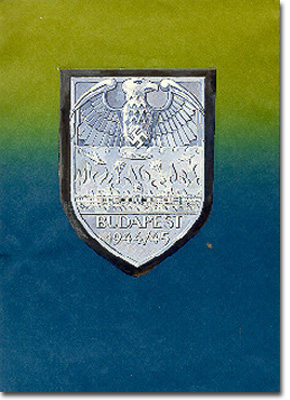 |
During the winter of 1944 Budapest
was already referred to as the “2nd Stalingrad” in Hungarian army reports.
No wonder that the Hungarian Army Corps Headquarters gave orders on 23rd
of December, 1944 to bring into service a special badge similar to the
German “ Crete”, “ Africa”, “Demjansk” and “ Krim” etc.. army badges.
The Germans came up with a
similar idea but it was never carried out.
The Hungarian designers designed
a badge to be worn on the chest; the Germans designed a pressed shield-shaped
to be worn on the upper arm. This drawing is a reconstruction of the latter
plan. It is thought that only a few samples and also only the design of
the badge were made. During the siege some people saw drawing samples of
the badge next to the bodies of killed and looted soldiers.
The siege of Budapest inspired many
medal designers. During the siege the Arrow Cross Government was
planning the introduction of “The Cross of the Heroes of Budapest “ badge
of honour, but in February 1945 there was no-one to grant the medal. The
Soviet military leadership introduced the commemorative medal “ For the
Capture of Budapest”; this medal was given to 350 000 soldiers altogether,
not only those who fought in the siege but also those who participated
in preventing the German relief attempts.
|
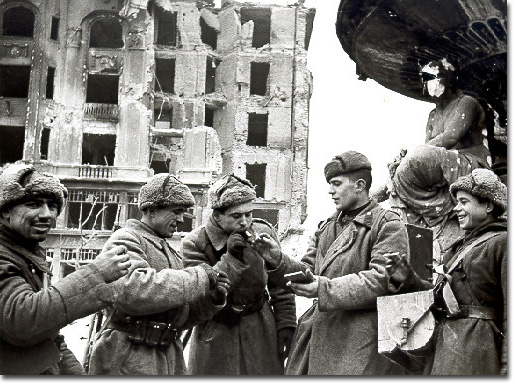 |
Soviet troops at Kálvin square.
The Danubius well, demolished after the siege and removed to Erzsébet square,
is seen on the right. Photo: J. Haldej
Source: MTI
|
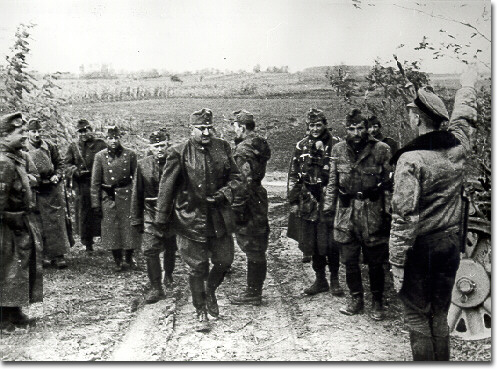 |
Defense Minister Károly Beregfy
arrives at the front line, November 1944.
Source: Hungarian National Museum
|
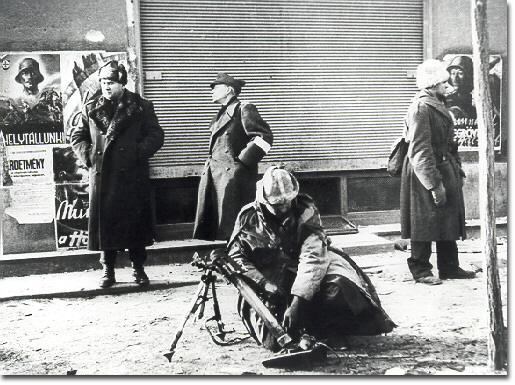 |
Lieutenant general Nicolae Sova,
commander of the 7th
Romanian battalion, somewhere downtown.
Source: Military Institute and Museum
|
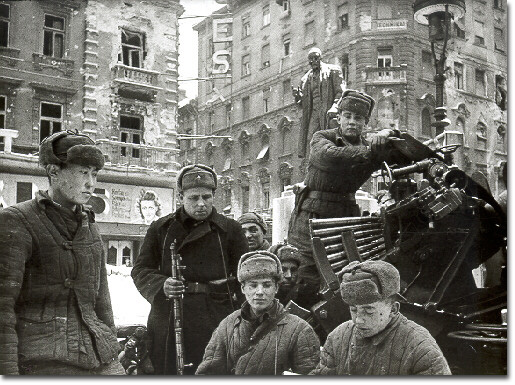 |
Soviet anti-aircraft artillerymen
on Erzsebet korut in front of today's Bastya cinema. Behind the soldiers
is the statue of Jeno Rakosi, which was later demolished. Photo: J. Haldej
Source: MTI
|
Ernst Keller’s Christmas letter
to his parents from Budapest. Due to censorship, the writer attempted
to express and communicate the dreams and wishes of the ordinary soldier
by using drawings. The author became a prisoner of war after the
siege and he was freed at the end of 1948.
1. What can a foot soldier dream
about? – rest
2. Delicious food and women
3. A leave pass: Lance corporal Stove-pipe,
between December 17, 1944 and March 25, 1945…
A Wehrmacht ticket issued in Budapest
4. And the big question: the discharge
command: Sub-officer Stove-pipe was discharged from active duty on December
2, 1948. Publisher: Bureau of Mass Information, December 16, 1944.
Magyarcsók (probably Mogyoród)
|
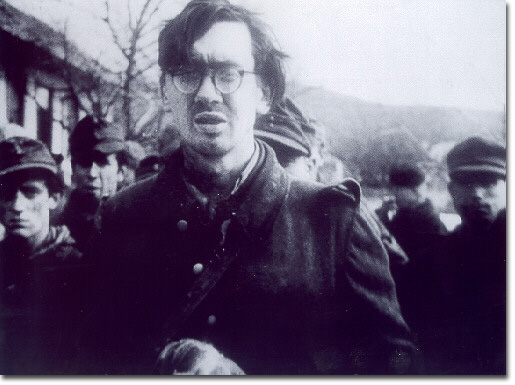 |
An imprisoned German soldier
after the fall of the blockade.
Source: Soviet newsreel
|
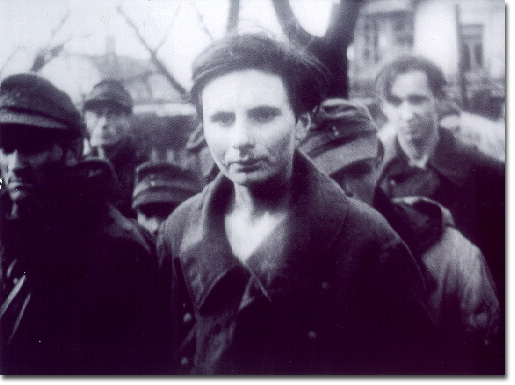 |
Haggard-looking woman in an army
coat among the captured.
Source: Soviet newsreel
|
|